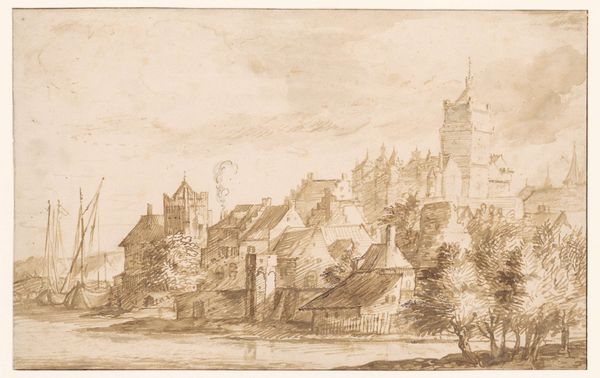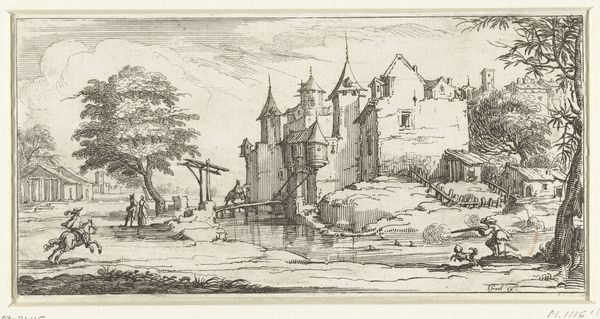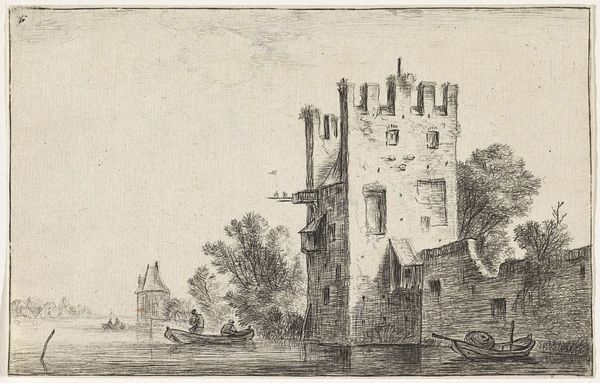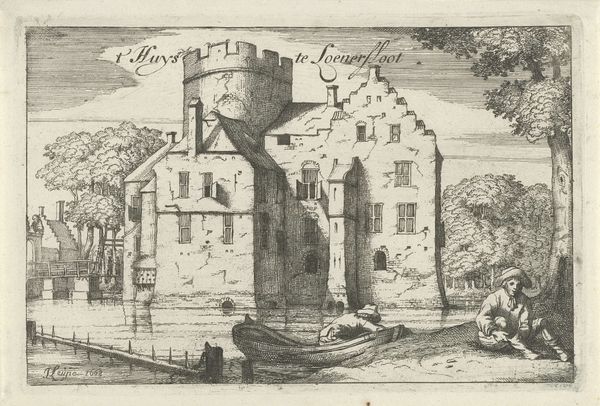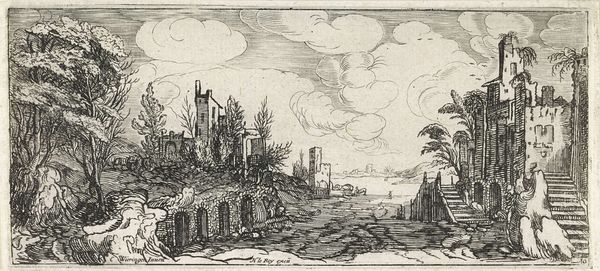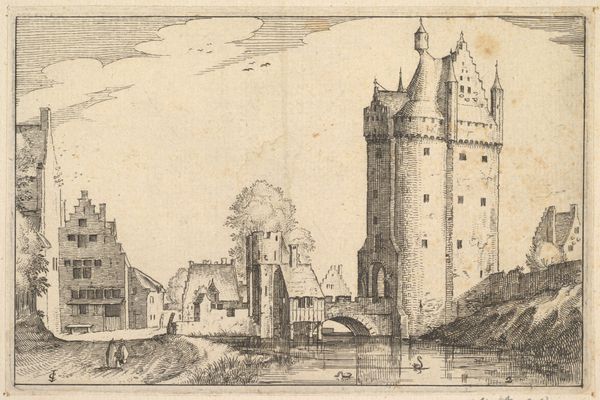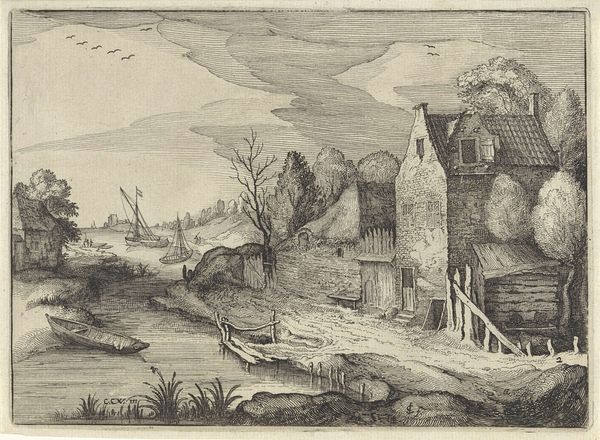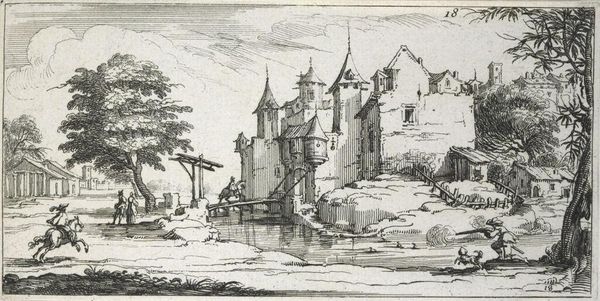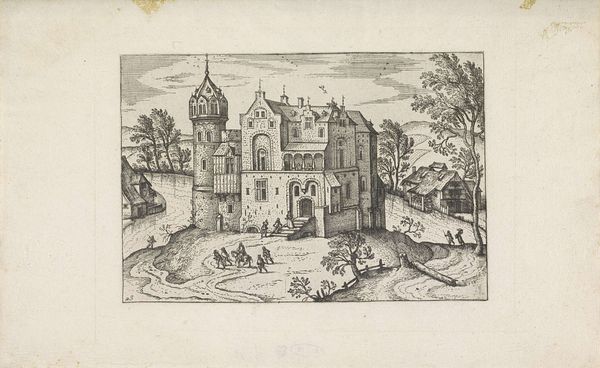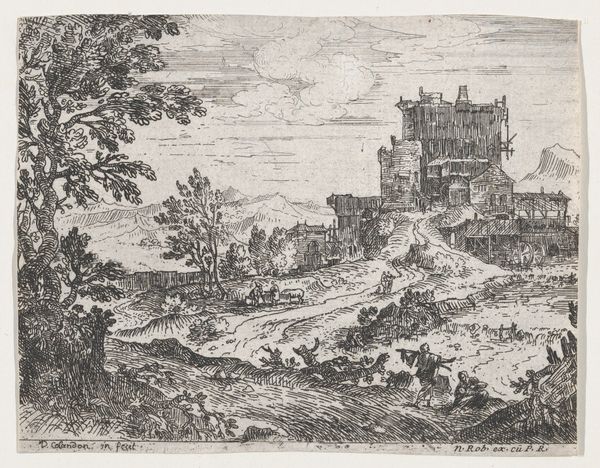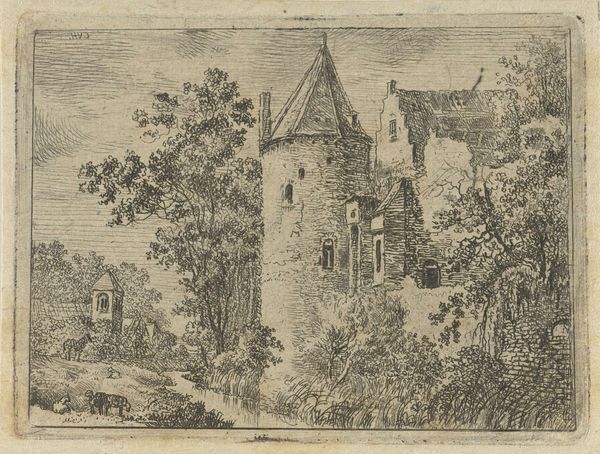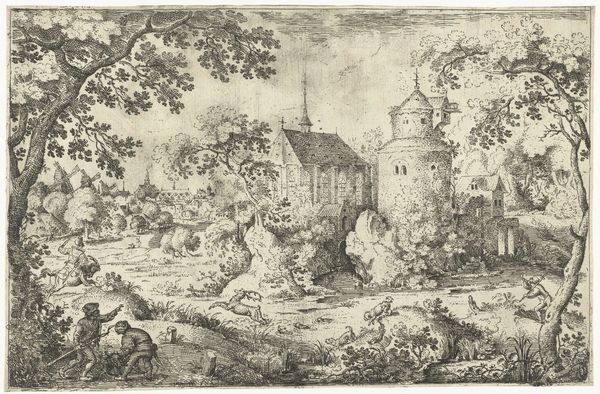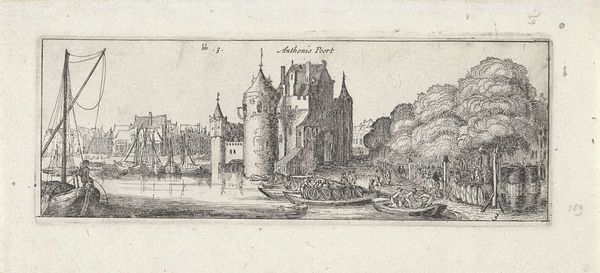
drawing, pen, engraving
#
drawing
#
dutch-golden-age
#
pen sketch
#
landscape
#
river
#
mannerism
#
pen
#
cityscape
#
history-painting
#
engraving
Dimensions: height 154 mm, width 258 mm
Copyright: Rijks Museum: Open Domain
This etching of a ruined city gate on the water was made in 1612 by Claes Jansz. Visscher. The print was created by incising lines into a metal plate, inking its surface, and then using a press to transfer the ink onto paper. The stark black lines create a scene of desolation and decay. Note how the artist captured the crumbling facade with a network of fine lines. These detailed lines required skilled craftsmanship, and the printing press allowed the design to be replicated and distributed widely. Back then, printmaking was an important means of circulating images and ideas. Visscher was not just an artist, but also an entrepreneur who printed and sold his works. The commercialization of art through printmaking reflects the changing landscape of artistic production. This was a shift that made art more accessible, but also closely tied to the forces of the market.
Comments
No comments
Be the first to comment and join the conversation on the ultimate creative platform.
